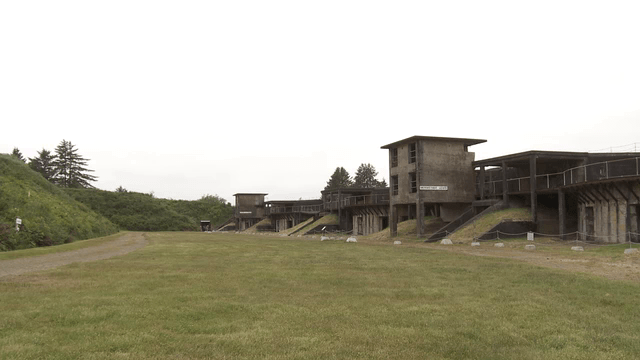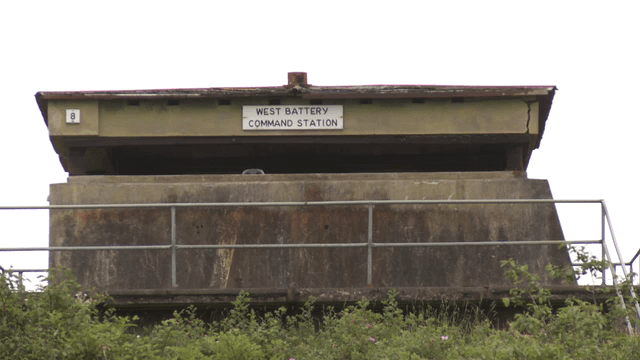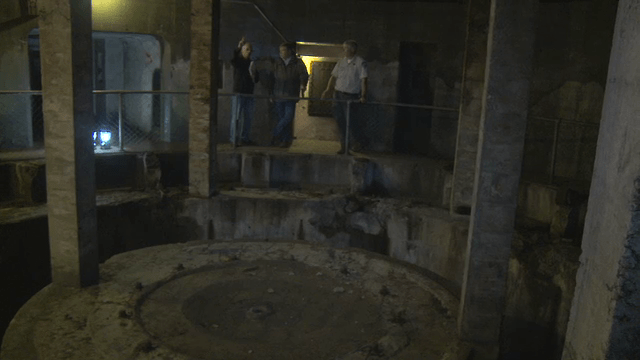There are so many reasons to visit Fort Stevens State Park: perhaps to dig a supper from the sea; or catch a summer trophy from the Columbia River estuary; or take your home on the road for camping adventures!
No doubt about it, Ft. Stevens is made for the good times, according to park manager Mike Stein: “We’ve over 4,000 acres to spread across, plus we’ve got miles of beach to explore and nine miles of paved trail, plus another seven miles of nature trail. There’s plenty to do and plenty of elbow room to stretch out and play.”
But if you want to “find the fort” at F.t Stevens, follow park ranger John Koch through a locked gate and into the darkness for a stroll underground.
The free guided tour of “Battery Mishler” is chilly, damp and dimly lit, but it is a place where you can see and touch Oregon’s military past.
Park historian and member of the Friends of Old Fort Stevens David Lindstrom noted that Battery Mishler was built in the 1890s to protect the mouth of the Columbia River. “In the late 19th century, America was emerging as a world power and we had many potential enemies who looked at the Pacific Northwest with envy. Some strategists said that if our enemies traveled up the Columbia River and reached Portland, they had a straight shot to Seattle and they could go south if they wanted to – it was viewed as a hub by the enemy.”
A century ago, Battery Mishler was a part of a Columbia River Harbor Defenses that included multiple gun batteries that were located on both sides of the Columbia River. Fort Stevens is one of three forts built at the mouth of the Columbia River and it boasted eight concrete batteries – including mortars and long and short range rifles. Fort Canby and Fort Columbia were on the Washington state side.
At Ft. Stevens, Battery Mishler was the only underground battery and it housed two 10” guns that were open to the sky. Each gun was mounted on disappearing carriages, which hid the guns behind concrete and earth walls when not being fired. Each gun was operated by teams of 35 men who worked efficiently as one unit to fire each massive gun.
“It was choreographed,” said Lindstrom. “You had to be at your station for a task at a specific time and nobody else could be there but you. All of that was figured out and choreographed and practiced.”
The guns could fire 617-pound shells at a distance of nine miles. “The concussion from each firing was amazing!” added Lindstrom. “When the mortar battery fired, the concussion would rip your pant leg seam. The men didn’t wear ear plugs either. You could feel the pressure of the blast across your entire body.
The tour takes you past hallways and rooms and interesting features including a massive underground gun pit. The huge gun was mounted atop a large, thick concrete pillar.
Koch added, “You get a feel for the grit of the work and what the environment was like for the soldiers down here. You can’t duplicate this anywhere else – you can only get it at Ft. Stevens. You’re not going to see this anywhere in the United States – only here in Oregon.”
In the late 1800s, Fort Stevens was a significant statement to the world that the United States was a force to be reckoned with: “What we see here is a manifestation of a nation’s effort to become a world power,” said Lindstrom. “We were an emerging world power and this shows how the US developed that position.”
Koch offered that a tour of the Ft. Steven’s defenses rounds out a fascinating and rewarding visit to the state park: “You may be here for a camping weekend or for enjoying the clamming tides or just to walk the wonderful beach we have here. But then, you can step over here and explore a bit of Oregon history. You get the best of everything that state parks can offer.”
The Underground Battery Mishler Guided Tours are free and occur daily. A $5 daily parking permit is required. Year-round parking permits are also available from Oregon State Parks.



